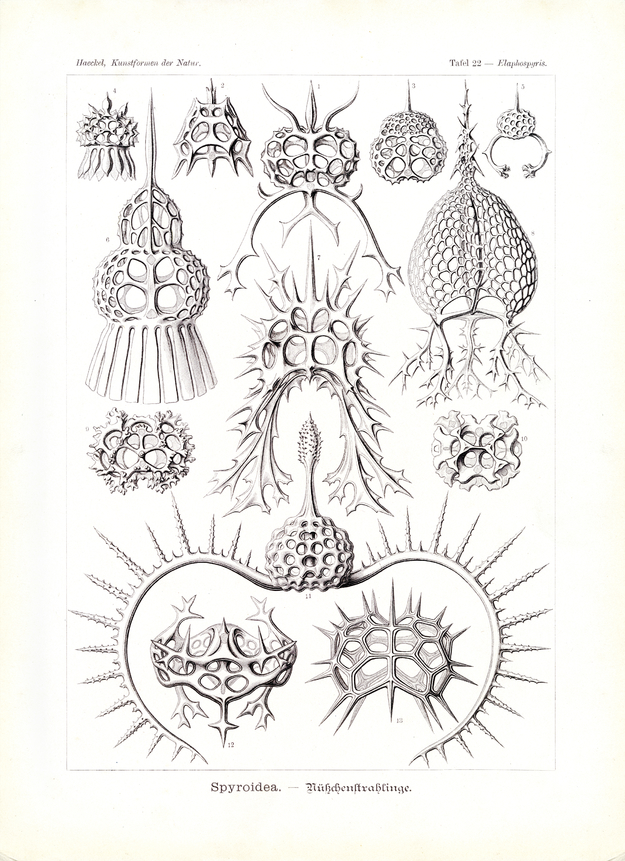Translation of the original German introduction by Ernst Haeckel:
Phylum of Protozoa (Urtiere); - class of Rhizopoda (Wurzelfüßer); - subclass of Radiolaria (Strahlinge); - legion of Nassellaria (Korbstrahlinge or Monopyleen); - order of Spzroidea (Nüßchenstrahlinge).
Specimen of this plate present the cleaned silicic skeletons of Spyroidea, a special order of the diverse legion of Nasselaria. The skeleton of these small Radiolaria, to the naked eye visible only as a small dot, forms a tender grill shell of bilateral basic form, composed of two halves that appear separated by a central constriction (fig. 1, 9, 13) or by a vertically standing ring (fig. 6, 8, 11), similar to the two halves of a walnut. The living soft body that lies embedded within this shell and usually contains a conical or nut-shaped central capsule, is not shown in this plate, also not the numerous delicate plasma threads (Pseudopodia), that emanate from it (compare plate 11 and 21). The clathrate silicic shell of most Spyroidea is equipped with flagella or wing-like appendices that are partly used as protecting armor, partly as hovering apparatuses as well as support for the Pseudopodia. On top of the peak of many shells stands a horn or ‘parting prickle’ (fig. 6, 8, 11), next to it many a times two ‘side prickles’ (fig. 1, 7, 12). At the base the opening of the casing is found, mainly for the treading out of Pseudopodia that are often equipped with two long ‘side prickles’ or feet (fig. 1, 5, 11) or surrounded by a corona of leaves or flagella (fig. 4, 6, 7, 8).
Translation by VR Translators Bangalore
We've scanned the original lithography at 1200dpi on the Epson A3 scanner of A3 scanner huren. You can download a 400dpi JPEG here.
